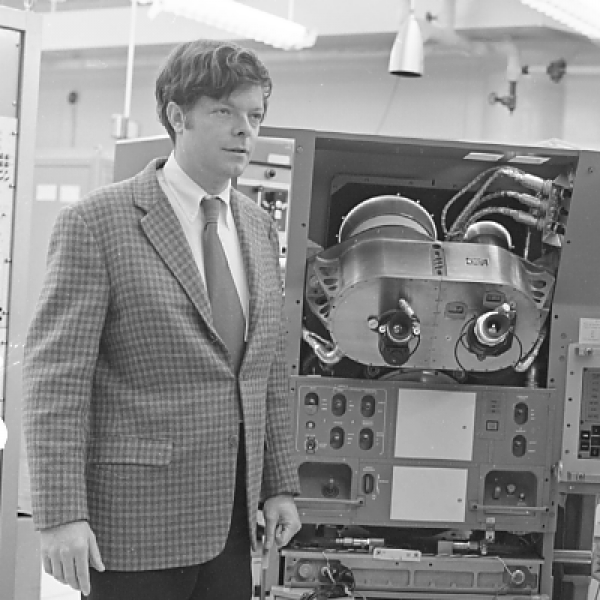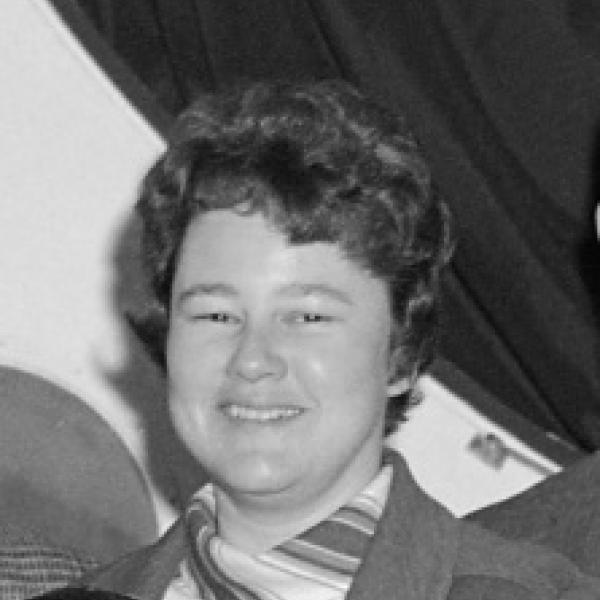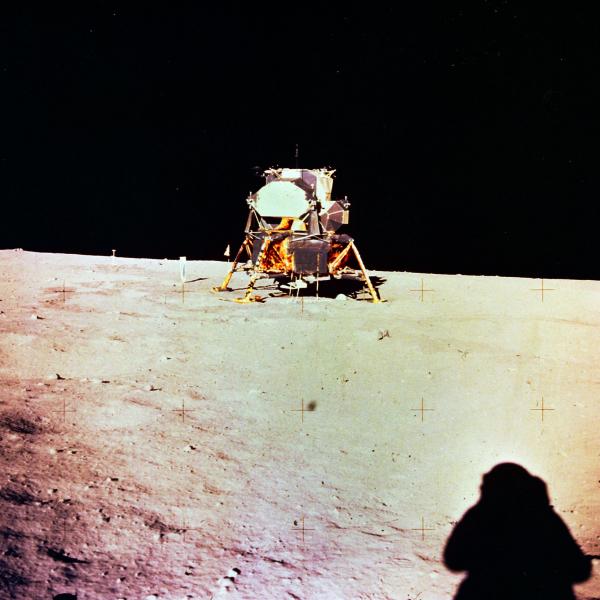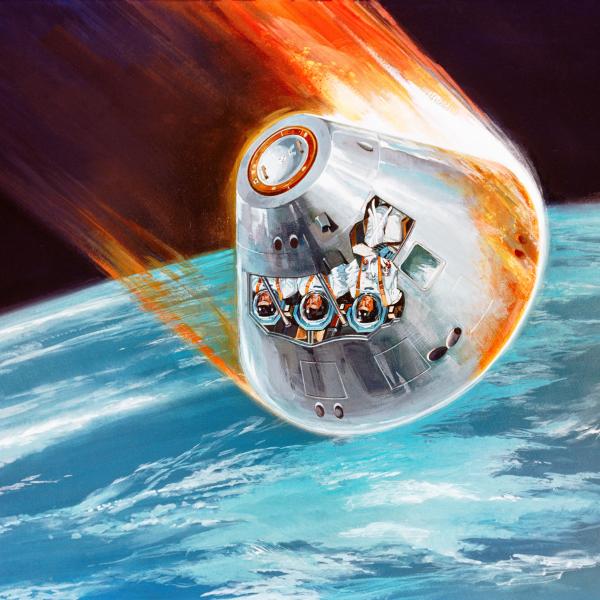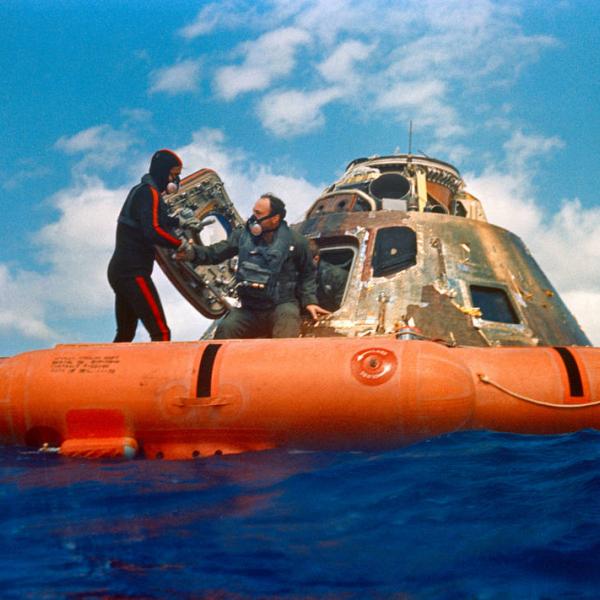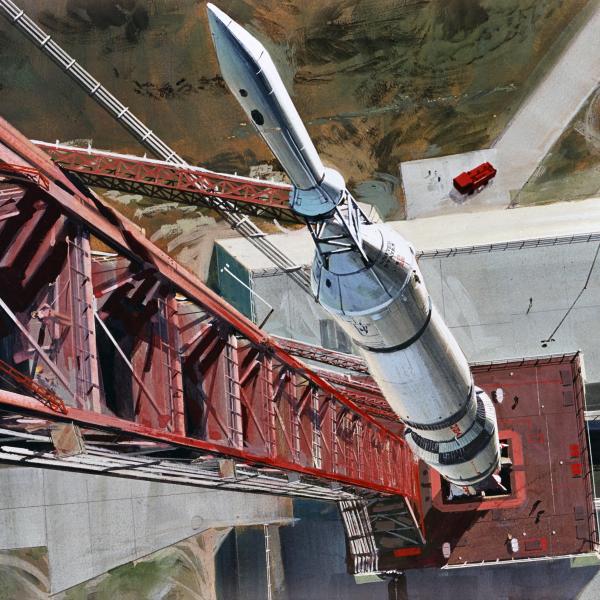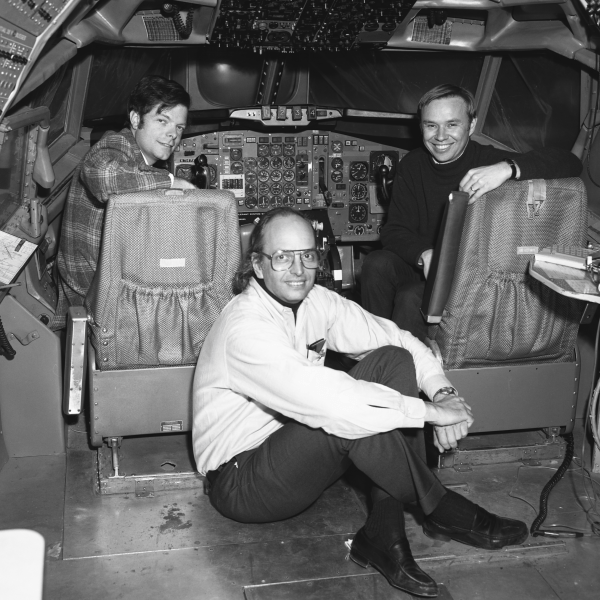
The Apollo Missions Mother Ship
What was the mother ship of the Apollo missions? The Command and Service Module or CSM was the spacecraft that the astronauts spent the most time in traveling to the moon and back. The other was the Lunar Module. The CSM was the mother ship of the Apollo system and was made up of two parts: the Command Module which carried the crew and the Service Module which contained all the critical support systems. Together they resembled something akin to what we think of when we think of a typical spaceship – a vehicle with an aerodynamic nose and a large exhaust tube for the rocket engine.
The CSM was designed and built by North American Aviation (NAA) in California, now part of Boeing. They started working on the system right after Kennedy's moon speech in 1961 and it took thousands of space engineers seven years to get it ready for moon missions. It was initially designed to carry astronauts all the way to the moon atop a rocket and back again without separation, rendezvous, or docking, but NASA soon opted for the modular three piece rendezvous system that included the Lunar Module. The Apollo astronauts spent plenty of time at NAA training and preparing for missions on these brand new spacecraft. In spacecraft simulators at NASA and MIT, they learned how to use the guidance and navigation system pioneered by Draper's Lab at MIT.
The top cone-shaped part of the spacecraft was the Command Module or CM and contained the command center complete with the primary guidance, navigation, and control system (PGNCS) which centered around the Apollo Guidance Computer (AGC). The crew piloted the spacecraft, slept, and ate in the CM and in here, they didn't need to wear their bulky space suits. The cylindrical shaped Service Module (SM) contained basically everything the spacecraft needed to fly and allow the crew to survive the moon missions including oxygen, water, power and engine fuel. The SM was also equipped with a single engine that propelled the spacecraft on its journey back to Earth. The lighter the CSM could be, the better it would be for fuel economy, among other things. Cline Frasier NASA Project Manager, was tasked with stripping bulk from the CM and LM guidance and control systems. Frasier found ways equipment could be eliminated, or modified, to reduce weight and improve reliability. The revolutionary, and controversial change was asking the MIT lab to incorporate the primary autopilot functions in the Apollo Guidance Computer – for both the CM and the LM.
A properly functioning Command Module with its revolutionary guidance computer allowed the crew to precisely navigate an incredibly narrow reentry corridor back to Earth. Just before returning to earth, the electrical connections or umbilical between the Command Module and Service module were severed by explosive guillotines and the Service Module drifted off to burn up in the atmosphere. The CM then adjusted its orientation so that the bottom of the module with its space-age heat shield faced towards the Earth's surface. During reentry, the temperature on the CM's surface would climb as high as 5,000 degrees Fahrenheit, and from earth it looked as if the command module was burning up, but in reality, the 'ablative' heat shield protected the inside of the CM by melting away or vaporizing as they reentered the earth's atmosphere. The material used to create the ablative shield was truly space age, and had to be invented just for this purpose. Without it the astronauts would have fried to a crisp when returning home from moon missions.

